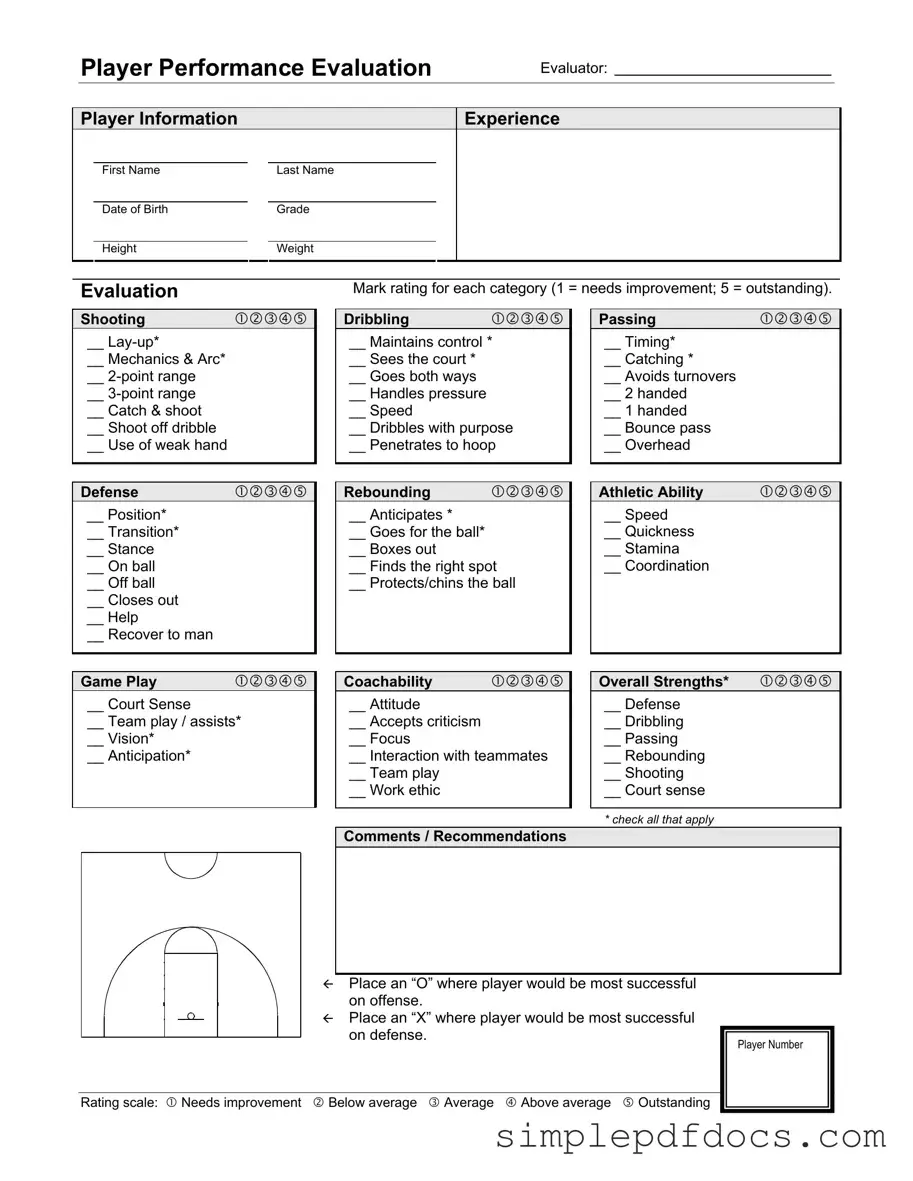The Basketball Evaluation form serves as a comprehensive tool for assessing a player's skills and overall performance on the court. It provides evaluators with a structured way to rate various aspects of a player's game, including shooting, defense, dribbling, rebounding, passing, athletic ability, and game play. Each category is broken down into specific skills, allowing for a nuanced evaluation. For instance, under shooting, evaluators can assess mechanics, range, and the ability to shoot under pressure. Defense evaluations cover aspects like position play and recovery skills. The form also emphasizes coachability, assessing a player's attitude, focus, and teamwork. Additionally, it includes sections for overall strengths and comments, enabling evaluators to provide personalized feedback and recommendations. By using a clear rating scale from "needs improvement" to "outstanding," the form ensures that evaluations are both objective and constructive, ultimately guiding players toward areas for growth and development.
